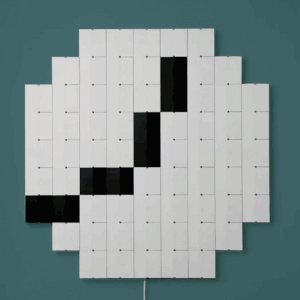Yoichi Onishi is a revered figure in the world of animation, particularly for his contributions to the global phenomenon Dragon Ball Z. His role as an animator on one of the most influential anime series of all time helped shape the visual and emotional landscape that has captivated millions of fans worldwide. Onishi’s contributions to Dragon Ball Z and his broader impact on animation demonstrate his incredible talent, dedication, and the enduring legacy he left behind.
Early Contributions to Animation
Yoichi Onishi was part of an era when Japanese animation was rapidly growing in global prominence. His artistry emerged during a time when traditional animation was the industry standard, requiring incredible skill, patience, and a keen eye for detail. Onishi began honing his craft in the 1980s, a pivotal period for anime, as many studios were transitioning from localized Japanese storytelling to narratives that resonated globally.
Onishi’s involvement in Dragon Ball Z stands out as a cornerstone of his career. His work contributed to the show’s meteoric rise as one of the most iconic anime series in history. The vibrant energy of the fight scenes, the dramatic character expressions, and the seamless fluidity of movement all bear the hallmark of Onishi’s artistic sensibilities. These elements elevated Dragon Ball Z from a simple television series into a cultural icon.
Onishi’s Role in Dragon Ball Z
Onishi’s work on Dragon Ball Z extended beyond mere animation; it was about bringing Akira Toriyama’s vision to life in a way that would resonate with audiences of all ages. As a key animator, Onishi played a significant role in crafting some of the show’s most memorable scenes. From intense battle sequences to quiet, reflective moments, his talent ensured that the series remained dynamic and emotionally engaging.
One of the defining aspects of Onishi’s work was his attention to detail during the most action-packed scenes. Dragon Ball Z is famous for its elaborate fight sequences, where characters unleash powerful energy blasts and engage in high-speed combat. These moments required immense precision to maintain the integrity of the characters’ designs while also conveying a sense of motion and impact. Onishi’s skill as an animator was instrumental in achieving this balance.
Moreover, Onishi’s contributions extended to the emotional core of the series. Dragon Ball Z is not just about battles; it’s also a story of friendship, family, and perseverance. Onishi’s ability to capture subtle emotional expressions added depth to the characters, making them relatable and memorable. Whether it was Goku’s unwavering determination, Vegeta’s internal struggles, or Gohan’s journey to maturity, Onishi’s work helped convey the heart of the series.
The Aesthetic Appeal of Onishi’s Animation
A significant part of Onishi’s artistry lies in his ability to merge dynamic action with striking visuals. Dragon Ball Z is known for its iconic visual style, characterized by sharp lines, bold colors, and dramatic energy effects. Onishi’s contributions ensured that these elements were consistently executed, creating a cohesive aesthetic that fans instantly recognize.
One of Onishi’s most notable achievements was his ability to animate ki energy, the signature power source in the Dragon Ball universe. The glowing energy auras, explosive blasts, and shockwaves that ripple through the air during battles are integral to the series’ visual identity. Onishi’s expertise brought these elements to life, adding a sense of scale and intensity that enhanced the overall viewing experience.
Additionally, Onishi’s use of perspective and framing played a crucial role in heightening the drama of key scenes. By employing dynamic camera angles and emphasizing motion, he created a sense of urgency and excitement that drew viewers into the action. This approach not only showcased his technical skills but also demonstrated his ability to tell a story through animation.
The Global Impression of Dragon Ball Z
Onishi’s work on Dragon Ball Z contributed to the series’ worldwide appeal. The show became a gateway for many fans into the world of anime, introducing them to Japanese storytelling, culture, and artistry. Onishi’s animation helped bridge the gap between Eastern and Western audiences, showcasing the universal appeal of compelling characters and dynamic visuals.
The legacy of Dragon Ball Z can be seen in its continued popularity and influence on modern media. Countless animators and creators cite the series as a major inspiration for their work, and its impact can be felt in everything from video games to blockbuster films. Onishi’s contributions to the show played a significant role in shaping this legacy, ensuring that Dragon Ball Z remains a cultural touchstone for generations to come.
Onishi’s Broader Influence on Animation
While Dragon Ball Z is undoubtedly the highlight of Onishi’s career, his influence extends beyond a single series. Onishi was part of a generation of animators who helped define the golden age of anime, setting the standard for quality and creativity in the industry. His work inspired countless artists and animators to pursue their passion and strive for excellence in their craft.
Onishi’s dedication to his art serves as a reminder of the importance of craftsmanship in animation. In an era where digital tools have become the norm, his work stands as a testament to the beauty and skill of traditional animation techniques. His bequest is a source of inspiration for animators who seek to blend innovation with the timeless principles of hand-drawn art.
Remembering Onishi’s Legacy
Yoichi Onishi’s contributions to animation continue to resonate with fans and creators alike. His work on Dragon Ball Z helped define the series as a cultural phenomenon, and his influence on the industry is immeasurable. By bringing Akira Toriyama’s vision to life with skill and passion, Onishi ensured that Dragon Ball Z would remain a beloved classic for decades to come.
No comments yet.







